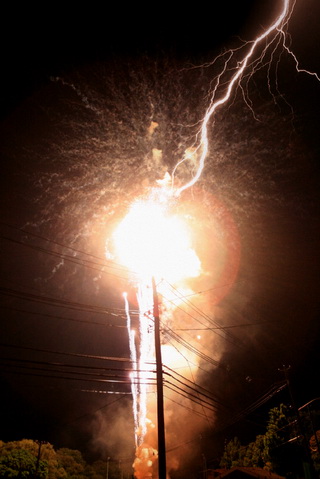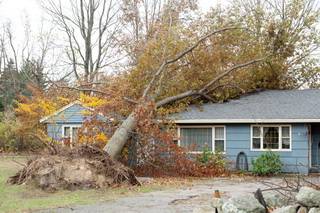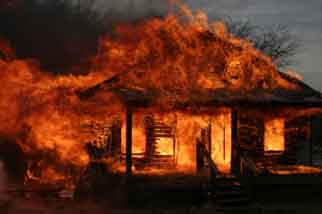Many of us are not aware of the danger lurking in a thunder and lightning storm. U.S. Fire Departments respond each year to an estimated 31,400 fires started by lightning strikes. In fact, the National Severe Storm Laboratory states there are $4-5 billion dollars in damage, approximately 24,000 people killed and another 240,000 injured by lightning strikes around the world each year. In January 2006, after an extensive investigation, the deadliest U.S. fire started by lightning in recent years was the West Virginia coal mine explosion that claimed 12 lives.
How does lightning strike people and objects causing injuries and fires? There are several ways: (1) it can strike directly, (2) a contact injury resulting when individuals touch an object and that individual or object is struck by lightning, (3) a side splash when the current jumps from a nearby object to a person, (4) ground strike from a current passing through the ground to the object or person, and (5) blast injuries where the person obtains hearing damage or blunt trauma from being thrown to the ground.
What can we do? The US National Lightning Safety Institute advises everyone to have a plan for their safety when a thunderstorm occurs and to react accordingly as soon as the first lightning or thunder is observed. Lightning often comes before the rain begins. Count the seconds between the lightning flash and thunder then divide by 5 to determine the distance in miles. The following precautions should be taken if the lightning is 5 miles or closer.
1. The safest place to be is inside a building or a fully enclosed vehicle with all windows closed.
2. When indoors—don’t use water, do not stand close to doors and windows, do not use the telephone. Turn off, unplug and stay away from headsets, appliances, computers, power tools and TV sets.
3. If you cannot find shelter, crouch down with your feet together and put your hands over your ears. Stay at least 15 feet away from other people.
4. Stay away from metal objects such as fences/machinery/tools/golf clubs/etc. and avoid water, high ground and open spaces. You never want to be the tallest point in the area.
5. Precautions should not be relaxed until 30 minutes after the thunder has stopped.
Businesses can protect themselves with a variety of lightning protection systems. However, they must follow specific guidelines and codes to insure proper implementation. Certain items such as telephones, modems, computers and other electronic devices can be damaged by lightning through the phone jacks, network cables and electrical outlets.
CED engineers investigate fires caused by lightning strikes and follow the science behind fire “cause and origin” investigations. Also, our engineers understand lightning detection systems. When investigating lightning strikes we scrutinize whether companies adhered to NFPA 780 installation standards. Should you have any question regarding lightning strikes or require our assistance, please call 800.780.4221.






